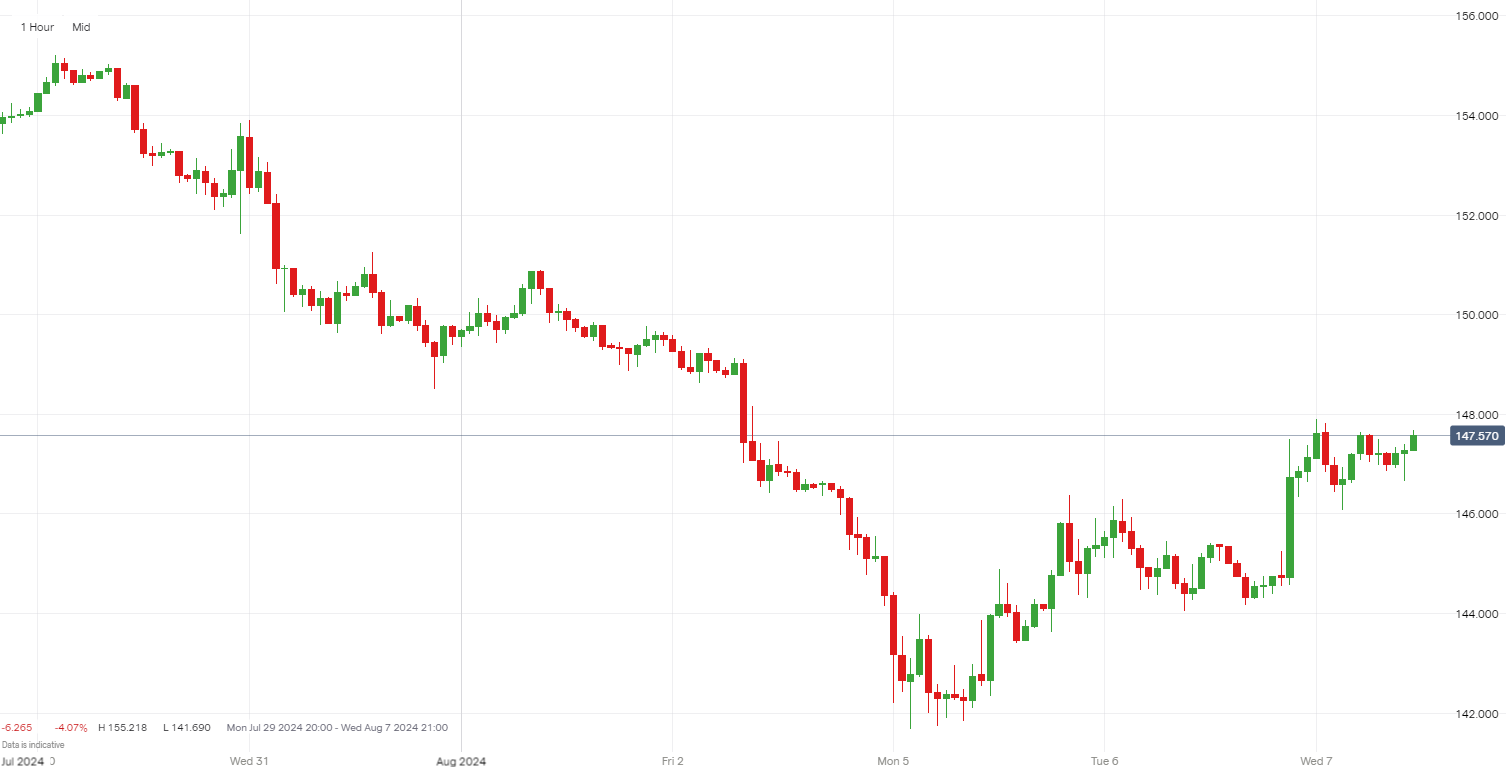Stocks surge as Bank of Japan reverses course on yen
Learn how the S&P 500 surged over 1% after the Bank of Japan's dovish comments, reversing a steep early August decline. Discover the impacts on USD/JPY and the future of the carry trade amid changing rate dynamics.

Key Points
- S&P 500 rebounded over +1% after falling more than -5% in early August, driven by comments from the Bank of Japan.
- BoJ Deputy Governor Uchida's dovish comments helped stabilize markets after an unexpected interest rate hike.
- USD/JPY fluctuated significantly, dropping from above 150.00 to below 145.00, then rebounding to around 147.50.
- USD/JPY crashed from above 160.00 to below 145.00 in less than a month, challenging the carry trade amid changing rate dynamics.
S&P 500 climbs above $5,300 as volatility retracts
After experiencing a significant decline of more than 5% in the first three trading days of August, the S&P 500 has bounced back, gaining over 1% following comments from the Bank of Japan. This recovery reflects a temporary easing of market volatility, driven by reassurances from Japanese monetary authorities. Japanese stocks had an even more volatile start to the week, with the Nikkei 225 logging its worst day since 1987 (-12%) on Monday and their best day since 2008 (+10%) on Tuesday.
BoJ says no rate hikes while stock market drops
Bank of Japan Deputy Governor Uchida made dovish comments following the recent unexpected interest rate hike, which had initially led to the significant downside in the Japanese Nikkei stock index. Uchida's remarks soothed investor concerns, contributing to a stabilization in both domestic and international markets.
Japanese yen reverses bullish sentiment amid dovish BoJ
The USD/JPY pair experienced significant fluctuations, dropping from above 150.00 to well below 145.00 following the unexpected rate hike from the Bank of Japan. However, it rebounded to around 147.50 after Deputy Governor Uchida's balanced comments, indicating a complex interplay between market sentiment and central bank actions.
USD/JPY price history

Is the USD/JPY carry trade over?
The USD/JPY pair crashed from above 160.00 to below 145.00 in less than a month as traders unwound positions benefiting from the 5.5% interest rate differential between the US and Japan. With the Fed set to cut rates and the Bank of Japan hiking, the traditional carry trade dynamics are shifting, posing challenges for traders who have relied on this strategy.
How to trade Japanese yen
- Open an account to get started, or practice on a demo account
- Choose your forex trading platform
- Open, monitor, and close positions on JPY pairs
Trading forex requires an account with a forex provider like tastyfx. Many traders also watch major forex pairs like EUR/USD and AUD/USD for potential opportunities based on economic events such as inflation releases or interest rate decisions. Economic events can produce more volatility for forex pairs, which can mean greater potential profits and losses as risks can increase at these times.
You can help develop your forex trading strategies using resources like tastyfx’s YouTube channel. Our curated playlists can help you stay up to date on current markets and understanding key terms. Once your strategy is developed, you can follow the above steps to opening an account and getting started trading forex.
Your profit or loss is calculated according to your full position size. Leverage will magnify both your profits and losses. It’s important to manage your risks carefully as losses can exceed your deposit. Ensure you understand the risks and benefits associated with trading leveraged products before you start trading with them. Trade using money you’re comfortable losing.
